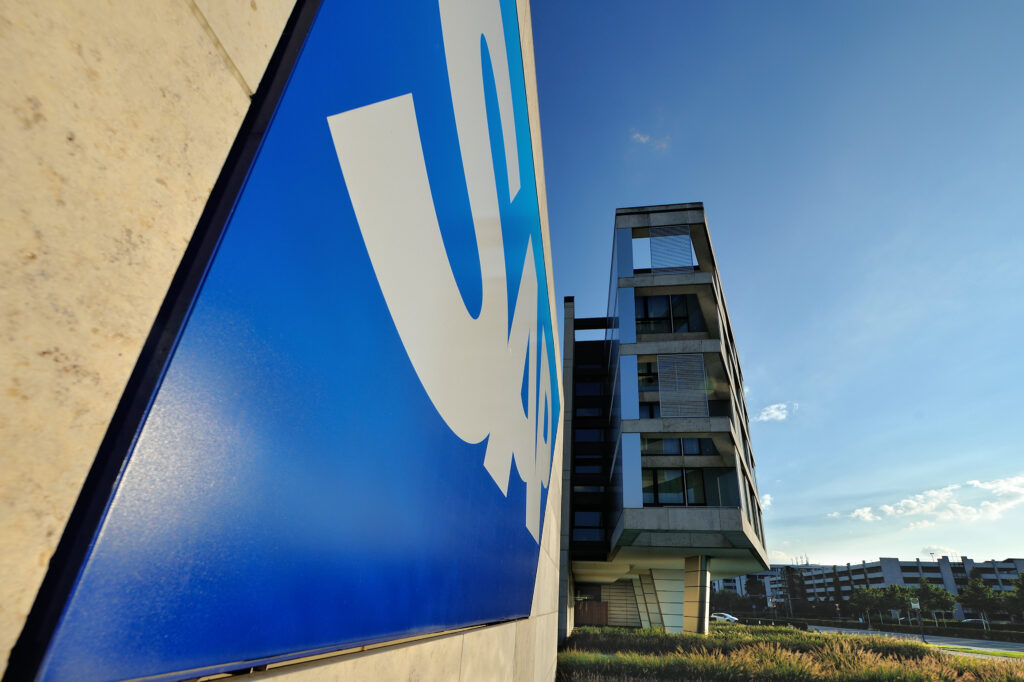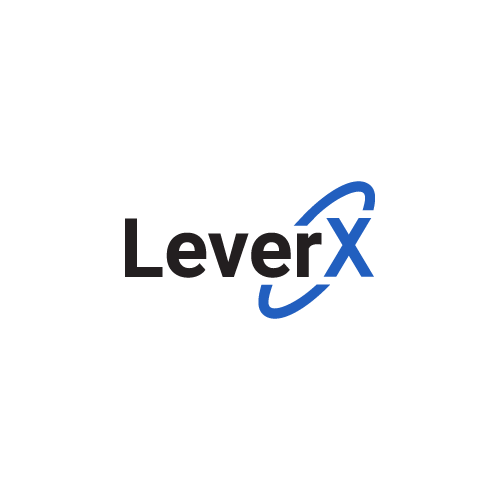Andy Hancock, SAP’s Global VP, Centre of Excellence, Digital Supply Chain emphasises SAP’s role in an ever-evolving supply chain landscape. In this vein, it isn’t simply an acceleration towards digitisation that this global heavyweight is promoting. Rather, SAP is helping businesses produce a considered, bespoke and collaborative roadmap that highlights their precise pain points and the business outcomes that can be improved with a data-driven approach.
Hi Andy. Everyone knows SAP as a globally leading tech brand, but what is the role of you and your team within the business?
Within SAP there are 3 board areas: Engineering, Marketing and Solutions and Customer Success. We are part of the Customer Success organization that directly engages with customers to help them achieve their business objectives. My team provides global project content, we do demand management and generation, and we initiate insight that can be used to support sales teams both regionally and globally.
This could manifest in the form of keynote presentations in large auditoriums, all the way to individual one-on-one engagements with customers, providing specific subject matter expertise. It’s about thought leadership and generating demand for the digital supply chain portfolio.
To that end and from your direct exposure to the market, how would you say the customer landscape has changed in recent years, and what pitfalls have you seen organisations fall into?
There are two sides to it, really. Yes, companies have had to rethink their supply chains anyway as a result of events like the pandemic. But, simultaneous, there has been a consumer shift too of course.
Click Below: view the magazine version of this content
What we saw immediately as a result, was a quite narrow focus on trying to improve the parts that were broken in order to respond and keep up with demand, but this revolved mainly around working in siloes, and not really connecting across business units within an organisation and the partner ecosystem. There are also those who were abiding by a principle of ‘it worked last time, let’s do it the same now’. By this, I mean they were looking backwards at historical data to make decisions, rather than looking at the current situation and realising an opportunity to do something different – to change their processes, to introduce innovation, and to capture market share.
There was also this mindset of seeing the supply chain as an overhead which needed to be made as efficient as possible, so companies looked to offshore, or consolidate facilities, or to single-source logistics providers. The problem with consolidating in that way, though, was everything then became more vulnerable to the events we’ve seen in recent years, as well as smaller stoppages, blockages, trade barriers or skills shortages.
Where we have been trying to support is to promote the need for a more agile, risk resilient supply chain. To open collaboration channels, and to be more proactive in real time, to the present situation.
Going back to those perceptions of SAP as an innovator, it sounds like you’re as much a consultant and guide, especially during such challenging times?
We have a direct vantage point of global and local markets, and these challenges presented an opportunity to share our overarching perspectives and to show how disconnected some supply chains really are just because they were focusing on the wrong things.
We could pivot them to refocus on business outcomes, built around a supply chain that would be agile to opportunity and resilient to risk. And then, once those outcomes have been established, then the technology can be applied.

This all starts by not just embarking on a ‘digital transformation’. But pinpointing what they actually need to transform, relative to where their shortfalls are now, to where their status quos aren’t fit for purpose, and where there are the biggest opportunities for improvement.
How would a typical conversation go with a prospective customer, with this ‘disconnected supply chain’ issue in mind?
So, we’re a Centre of Excellence so there’s a constant high-level analysis of markets and industries going on which provides us with a strong starting point. However, once invited to engage with individual accounts, that’s really where we need to identify their bespoke strategic priorities. We can then apply the correct segment of data and expertise – industry, sector, sub-sector, region, etc – to those desired outcomes.
Our experts filtering that information have decades of experience to also add to this proposition, which, when combined with the data we present to them relative to their pain points, results in a best practice roadmap that we can put to the customer. A roadmap that challenges those status quos and that shows there is a better way.
And then, presumably, you can also share a similarly broad range of technologies that would suit for a customer’s specific needs?
Absolutely – with SAP, there is always a best of breed solution and within the supply chain portfolio we cater from ‘design’ to ‘operate’ (D2O). This journey is made up of five pillars: design, planning, manufacturing, logistics and, finally, operation. SAP D2O represents the entire lifecycle of products in an end-to-end, connected, and interoperable supply chain process; from how a product is designed, planned, manufactured and delivered, to how it operates and is maintained.
Regarding the interconnection and interoperability of these departments… these siloes… these pillars, it’s not about throwing a technology into each area to augment processes there. It’s about ensuring a smooth flow of data between them, and to create a digital thread where companies can ultimately make a decision based on completely connected and reliable, real-time information.
Encouraging the creation of these digital threads obviously has operational value, but it’s also helpful from a mindset perspective. Typically and understandably, decision makers often make investments based on what keeps them up at night, and this may derive from pitfalls being presented from siloed sources of data. This might lead to a focus on the wrong priority, an overlook of a more pressing matter, or a short-term fix without getting to the route of a problem. A connected infrastructure will show how planning for inventory might impact engineering or manufacturing, for example. The resultant cohesiveness and awareness of impacts across the whole organisation then highlights what the benefits of a change really would be, and what specific business outcomes are being targeted – for example, fewer missed shipments, less waste, improved availability…
Premier Sponsor – Deloitte
When dealing with niche or bespoke requirements, this must lead to some quite novel and exciting applications of your products, but also some innovative partnerships and initiatives?
Certainly – we’re in an era of machine learning and AI and things like that, but how data is generated to fuel these systems is also hugely exciting. For example, with one partner, Smart Press Shop, and its own partner Syntax, we have had our SAP Digital Manufacturing Solution extended with a computer vision solution. It is a fully automated AI camera which enables employees within industrial environments to check for component defects in a live manufacturing space. With a single click, photos can pinpoint potential issues following a critical production step, thus removing manual error and time from the process, ensuring more accurate production, and speeding up the overall troubleshooting and manufacturing process.
With the Smart Press Shop and Syntax, their aim was to set a new milestone in automotive production with fully paperless production and automated machinery configuration. They adopted a cloud-first strategy, building core enterprise resource planning and manufacturing execution systems that run entirely in the cloud, using 100 percent green energy.
The integration of the SAP Digital Manufacturing together with SAP S/4HANA Cloud has revolutionised their manufacturing process. With the ability to configure the production line quickly and autonomously, without manual intervention, Smart Press Shop can manufacture small batches of components much more efficiently than traditional plants.
The result? An unprecedented competitive advantage in an industry where just-in-time manufacturing is a key requirement.
Another great example that we’re excited to be a part of can be found at the Deloitte SMART Factory in Wichita, Kansas. Here, as a founding member and part of comprehensive ecosystem of innovative collaborators, we bring business outcomes to life in a fully connected and operational production facility. We provide customers the opportunity to challenge the status quo by infusing intelligence into factories, leveraging real-time data analysis, AI, and machine learning – giving a virtual data-driven view of all operations. This enables new ways to solve business problems and generate new revenue streams, drive digital services, and keep customers engaged – all while achieving supply chain resilience.
Both of these examples lean into our emphasis on a digital transformation that focuses on agility and risk resiliency. Further they help our customers move digitalization and Industry 4.0 from a factory-focused initiative to a company-wide, competition-beating business strategy.
Content Sponsors – LeverX & Syntax
How does the workforce fit into the equation from the perspective of a digital enabler like SAP?
We frame it as a way to both safeguard expertise, but to also enhance job roles. Regarding the former, at present, once somebody retires or leaves, their knowledge goes with them. This isn’t to say that technology should replace them as a more evergreen source of information, but it should be introduced to allow those humans to move up to higher value tasks, and away from the more repetitive elements of their jobs.
They will be armed with more credible, accurate information in real-time, from which they can dictate more fit-for-purpose strategy. Not only that, but they’ll be able to enact decisions based on all the evidence they should need in that same real-time. We’ve all sat in on PowerPoint presentations and meetings where strategies are put forward, and then discussed, and then they’re explored before either making a change or not. Now, workers can go in armed with all the relevant information and outcomes derived from the data they have already been provided.
Ultimately, job roles are made simpler, more fulfilling and more impactful, through this data-driven approach.
Is this the sort of vision for the future you’re now promoting to customers?
Yes, it’s certainly about getting people with more knowledge making decisions based on more accurate and timely data. And, critically, doing so armed with insight of how those decisions will impact the whole organisation, and not just their specific silo.
More than that, they can not only bring a potential change to the table, but they can also come into meetings armed with scenarios… what would be the outcomes of alternate strategies, or by not changing anything at all.
This is what we at SAP can facilitate in that we understand your business processes and how to run your business from a process perspective; but we also have the capability of providing technologies that will then ensure those processes are optimised. This is compounded by a global reach which spans around 450,000 customers globally. This brings exposure to every type of challenge and therefore solutions that we have already seen hit their mark in similar circumstances. This means taking into account not just the use case but also the region, the labour challenges and landscape, the consumer profile, the industry itself, and any events that might impact their sector or specific operations.
Last, but certainly not least, I was wondering how the theme of sustainability fits into these conversations? As an issue that spans both company and consumer concern, presumably this is now a critical part of your own presentation of the digital supply chain?
Absolutely, it would be remiss not to discuss this. What SAP can do is take the sustainability conversation beyond just emissions and waste figures. Consumers and regulators are of course looking at these metrics, and rightly so, but what will set companies apart is finding ways to attribute value to these efforts. Don’t just do it to tick a box, because that mindset in itself isn’t sustainable. Do it because you can know and see that it contributes X amount to your organisation from a financial perspective too.
It always sounds like this approach detracts from the matter at hand, but in reality an organisation is only going to really dive into a sustainable practice long-term if it is actually feasible to do so. If it’s not, then inevitably standards will slip or corners will be cut.
SAP can once again promote processes and technologies that demonstrate where efficiencies can be made, and how sustainability initiatives are playing out in real-time. That is why SAP announced its Green Ledger, a ledger-based accounting solution for carbon. It allows companies to manage the carbon entering and leaving their systems and to balance their “carbon books” the same way they balance their financial books. If anything, sustainability is another frontier that really epitomises the impacts SAP can have. It’s about leveraging data through a collaborative approach, to bring resilience to the organisation through the lens of a specific business outcome.




